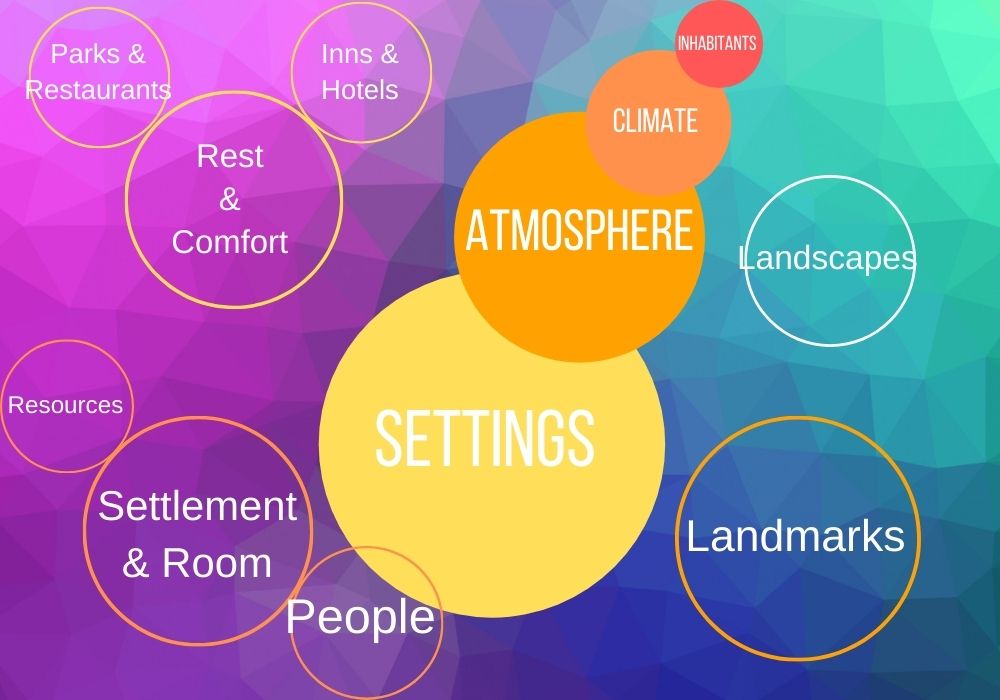
A Side Project
- Have multiple Projects
- How much time do you have?
- How many things do you want to do?
- Factor these 2 together, and you’ve got your answer.
- Learn new Skills
- Have you thought about learning how to Draw?
- Have you thought about learning how to Play an Instrument?
- Have you thought about learning how to Code?
- A side project is the right occasion to do so.
- Especially if you have a learning partner.
- Even better if the partner has already advanced skills.
- Limited Time
- Having less time to create your next project will force better results.
- Less time means less time to hesitate.
- Think crucial features through & implement.
- Between 90-120’/day for your main project.
- Between 10-20’/day for a side project.
A Notebook always with You
- Pocket Journal
- A 4-Colored Pen.
- A 200 pages hardcover journal is enough.
- Have it in your pocket.
- Draw regularly, even if there’s no apparent story.
- As new Stories come to you, draw them.
- Limited Material for more Ideas
- No internet is the best way to come up with new designs & Ideas.
- Material:
- A small notebook
- Multiple 4-colors pens (for Mind mapping)
- A Camera (if you need it)
- Your phone (Interviews, post on social & check you mails)
- Your laptop (Books & Graphic design, Coding)
- A 512GB Flash drive
- Dream Journal
- Once you’ll be comfortable with drawing, draw your dreams.
- Approximate, Exaggerate.
- What matters are the Symbols.
- Works better with Nightmares.
- For the Next month make a new Story/Game every day.
- Pick a place, whatever the size.
- Create at least 3 characters.
- Write an Ending.
- And then write dialogues.
- For a Game.
- Draw a Board.
- Draw a Card design.
- Write down 10 Rules.
- Write down Player Profiles.
Mind Map Your World

- You’re in a much better position if you know where to start.
- Decide where to Start.
- Have some Settings Templates.
- Some Urban Environments.
- Natural Landscapes.
- The Most Important Landmarks.
- Each of these Settings are Steps of your project.
Impersonate
- Performance
- Exaggeration is the key to Clear Communication.
- Mannerism will add the essential insights people need to understand.
- Characterize through Gestures.
- Characterize through Words & Expressions.
- Characterize through Rhythm.
- Impersonation
- Do different Voices.
- Do different Accents.
- Use different Pitches.
- Combine audio & visual elements.
- Imagine the Character’s reaction in a moment of Crisis.
- Imagine the Character’s reaction in a moment of Comfort.
- Wear some specific costume when you are to impersonate the Character.
- Your Characters
- What are your favorite characters?
- What are your Ideal types?
- Make up to 12 Characters you can reuse.
- Give them each a Distinctive Quirk.
Collaborate

- Share the Experience
- Find a Team.
- Ask everyone about their Passion.
- Ask everyone about their Interests.
- Ask them to create an Avatar.
- Ask what they’d like to do today :
- Improv comedy
- Scene writing
- Storyboarding
- Monologues
- Sketchs & Comic Strips
- Slapsticks & Anecdotes
- Parodies
- Create more Ideas & Projects
- Working as a team allows you to develop synergy between the skills.
- Working as a team potentially allows you to work faster.
- Ask them for their pet Project.
- See if you can implement it together in the upcoming month/year.
- Develop Sustainability
- Working as a team allows you to develop synergy between the People.
- Let others eat before you.
- Responsibility & Resilience may not sound like fun, but this is about Long Term Satisfaction.
- And there are few things that bring more satisfaction than building a Company.
Make Music on a Daily Basis
- Play an instrument.
- Play with your group.
- Sing.
- Everybody can Whistle.
- Record your whistling.
- Give it to a team member that can play.
- If you know someone who can play, ask them to teach you.
- People are always pleased to feel knowledgeable.
Focus & Let Go
- Short Sessions.
- If you start with a team of 4-5 persons and most of them are new to storytelling it would be suitable to have short sessions.
- Multiple 20′ Sessions each followed by a 5′ Break work well in the beginning.
- In some cases you may want to start with only 20’/day.
- Condition Everyone.
- You are going to Enjoy Yourself & Have Fun in today’s World building.
- There you go.
- Focus is the way to Satisfaction
- The more you’re in your Project, the more you enjoy it.
- The more you enjoy it, the more you get done.
- The more you get done, the more satisfied you are.
- Yay!
- Use your World Map to Start.
- Where are we beginning?
- How is the Place?
- How is the Atmosphere?
- Why are you here?

- Play.
- The Simplest way to design Dialogues is to play them.
- Who is here?
- Who are you interacting with?
- What are they doing?
- What do you tell them?
- What do they respond?
- How do they respond?
- What’s their goal?
- Will you interact with someone else?
- Will you continue with this character?
- Observe
- How do other characters behave?
- How do they use their hands?
- Do they tap their fingers?
- Do they fidget?
- Does their chin protrude?
- Do they speak in 3s?
- Look for answers.
- Ask Questions.
